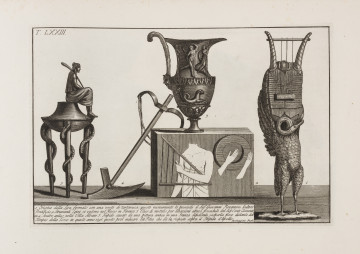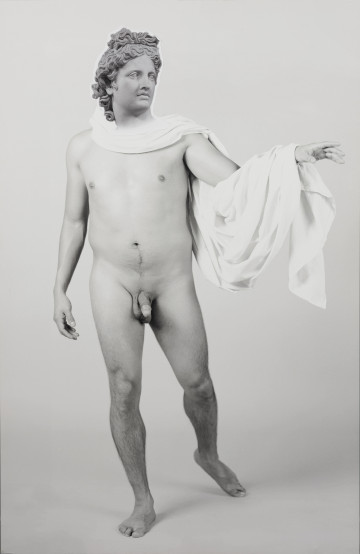
Apollo alla presenza di molto Numi ordina sia scorticato Marsia | Apollo in the company of Olympian gods orders the skinning of Marsyas
circa 1801 — 1810
National Museum in Szczecin
Part of the collection: European painting
During the Baroque period, paintings with mythological themes were in great demand. Thus, the Dutch painter Gerrit van Honthorst, who initially trained under his native master Abraham Bloemaert, went to Italy for more than ten years to hone his skills, studying the paintings of Italian masters such as Caravaggio, whose works left their mark on the work of the young artist from the North. Through careful observation of the works of Italian artists, Honthorst mastered the use of light effects to near perfection, especially when using an invisible light source. Therefore, the artist was fond of choosing and painting night scenes, called nocturnes, which enabled him to use advanced techniques with chiaroscuro contrasts. He became famous as an artist who was nicknamed Gherardo della Notte.
The painting from the collection of the National Museum in Lublin depicts a scene from the well-known myth about the legendary King Midas of Phrygia. The ancient ruler was appointed as a judge to determine the winner in a musical competition between Apollo, the god of beauty and music, and Martius, a satyr known for mastery of the aulos. The verdict given by Midas, who found the playing of Marsyas more beautiful, did not please the guide of the muses Apollo, who punished the king with donkey ears. Since then, the unfortunate ruler hid Apollo's ‘gift’ under a vast turban so that no prying eyes of his subjects could discover its secret. Only the ruler's court barber knew about the secret. Midas, under pain of death, forbade him to reveal to anyone what he was hiding under the rolls of cloth. The secret burdened the servant so much that one day he went to the seaside beach, dug a deep hole into which he shouted with all his might: ‘King Midas has donkey ears!’, after which he buried it and, having thrown off the burden of the secret, returned after the palace. After that, a clump of reeds grew up in the place of the pit. It silently murmured the words spoken by the servant, even at the slightest breeze. Consequently, the whole country learned about the ruler's shameful secret.
Author / creator
Dimensions
cały obiekt: height: 132 cm, width: 97 cm
Object type
painting
Technique
oil technique
Material
canvas, oil-based paint
Creation time / dating
Creation / finding place
Owner
The National Museum in Lublin
Identification number
Location / status

circa 1801 — 1810
National Museum in Szczecin

1804
National Museum in Szczecin

2004
National Museum in Szczecin
DISCOVER this TOPIC
Museum of King Jan III's Palace at Wilanów
DISCOVER this PATH
Educational path